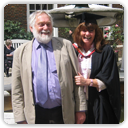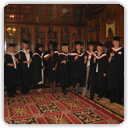 My Dental Journey over 40 years.
My Dental Journey over 40 years.
I didn’t expect to get the job. I had just left school, having done badly in my exams, but I certainly did need the job and my mum wanted me “to have a proper career”.
So she persuaded me to answer the advert for a trainee dental nurse and I went, rather reluctantly for the interview.
That was when I first met “Harty” Harriet, the fierce receptionist who ruled the practice with a rod of iron. She had been a Petty Officer in the Navy and ran the practice on naval lines. Although she had the exterior of a dragon, she had a heart of gold; it was just hard to find it!
 To my amazement, I was offered the job, for the princely sum of eight pounds a week. It was December 1st 1970, I was just 17 and little did I realise that this was the beginning of my 40 year dental journey.
To my amazement, I was offered the job, for the princely sum of eight pounds a week. It was December 1st 1970, I was just 17 and little did I realise that this was the beginning of my 40 year dental journey.
On my first day, I was measured for a “white grocer’s coat”, it was heavy cotton drill with detachable buttons and came down to 4 inches (100 mm) below the knee. The coats were sent to the laundry every week and were starched rigid!! Of course this was 1970, the era of mini-skirts and hotpants, so one of the first jobs was to turn up the hem to 4 inches above the knee.
I was told to shadow a nurse called Diane; tall and haughty – she was really scary. This was to be my training: “Watch Diane and do what she does”. In fact, that was how workplace training was at that time. All training was in house, you were shown how to do something and expected to be able to do it. Formal qualifications for dental nurses were not expected or encouraged. There was no registration and no CPD for dental nurses. There were postgraduate meetings and courses for dentists, but certainly not for dental nurses. This began to change in the early 1980s.
Fortunately, at that point I did not know that within 8 weeks of my starting I would be working on my own with the principal dentist. Diane handed in her notice not long after I started. She was newly married and was moving away.
At that time, fillings in back teeth were exclusively with amalgam. Loading the amalgam carriers and passing them to the dentist was the easy bit!! There were no capsules or mixing machines, so mixing amalgam by hand was my first lesson. Mixing alloy and mercury with a mortar and pestle is not easy. Then squeezing the mixture through gauze to get rid of the excess mercury was a work of art (all this without surgical gloves). We managed to get most of the mercury droplets coming through the gauze into a pot, but some escaped onto the worktop, so we would chase the droplets with a couple of record cards and scoop it into the pot. Some of the droplets fell on the floor which was highly waxed and polished lino. The combination of wax and mercury on the floor resulted in the wheels of the dental stools having a very attractive silver coating.
We would clean instruments in water (all done without gloves) and then sterilise them in the hot air oven. We also used the water boiler. There were no single use needles, so all needles for the syringes were sterilised fitted to the syringes. The needles were changed when they got blunt. There was only one handpiece of each type in each surgery and they could not be heat-sterilised, so a wipe with surgical spirit between patients had to suffice.
I am afraid extractions were commonplace, usually under GA using just nitrous oxide gas and oxygen. This was done by two dentists one administering the GA and the other extracting the teeth. Sometimes, if there was a “clearance” with a lot of difficult teeth to extract, the dentists would swap roles half way through. The DSA’s job was to calm the patient, catch the teeth in the kidney bowl and be there as the patient came round. More often than not the patient would be sick, so changing our white coats a couple of times a day could be common place.
Minor Oral Surgical procedures, including surgical extractions and apicectomies were commonplace and we welcomed them as something more interesting to break the routine of amalgam restorations. There were no Medical
History forms; all health issues were written on clinical notes. Endodontics then was just called Root Canal Treatment and had the surgical precision of Dynarod – hence all the apicectomies. It was only usually done on single rooted upper anteriors.
As a result of all those extractions, most patients over the age of 40 would probably have dentures of some kind and most patients over 55 would have full/full dentures. Acrylic dentures were made in our own lab. We had two lab technicians and an apprentice making dentures and ortho appliances for four dentists. Vulcanite dentures were not being made anymore but some patients would still attend appointments with old vulcanite dentures, these dentures could be up to 30 years old, sometimes more
Impression trays were metal and had to be cleaned by washing and then placing in the hot air oven. The dentist would use sticky wax as an adhesive to hold the impression onto the tray, not always successfully.
Almost all orthodontic treatment was done with removable appliances. Occasionally there would be a fixed appliance case. Everything was made by hand from stainless steel strip, so it took hours to do just one band-up. The strip was joined together using the Watkins electric welder, which shot sparks all over, much to the entertainment of the patient.
Radiographs were developed in a dark room by hand. We had 3 ceramic baths, developer, fixer and water. Xrays were hung on hangers. All old radiograph solutions were poured down the sink. We would use oblique metal radiograph cartridges for whole jaw – there were no OPTs.
Our practice was, and still is, in a country market town. Many of the farmers and their families then spoke with a very broad Derbyshire accent which the dentists could not always understand. Although I was a local girl, even I sometimes struggled to get their meaning. On Mondays, the farmers would come to the surgery straight from the livestock market, leaving behind a layer of cow muck on the footrest of the dental chair and a distinctly agricultural odour throughout the premises.
Domicillary vists were common, sometimes visiting out of the way farms with no electricity, taking teeth out by candle light or trying to take impressions in the dark by torchlight!!
The appointment book and appointment cards were written in pencil by the receptionist only. She had very shaky handwriting, which not everyone could read. The record cards were stored in a bank of metal filing cabinets and much of what was written on them was an almost illegible scrawl.
In those days, “political correctness” and “sexual harassment” had not been invented. I soon learned that I should not be leaning over the sink scrubbing instruments when my boss, the prinicipal, walked into the surgery in the morning. Otherwise I would get a cheery “Good Morning Susan” from him, followed by a slap on the bum.
I left the practice for a short while, after I married and had children, but I returned later to do different jobs. For a time, I worked part-time in the lab, casting models and making bite-blocks. Later I took on the role of dental health educator for the children in the newly established practice PDU (Preventive Dental Unit). I did eventually formalise my dental nursing experience by passing the National Certificate exam and once again worked part time in surgery. By this time, I was also doing the practice admin, so I qualified as a Practice Manager and continued in this role for 12 years.
The practice had also changed of course; now fully computerised, with OPT and autoclaves. Veneers, crowns, bridges and implants replaced the dentures, so the lab had long gone. But the farmers still occasionally come straight from milking parlour to dental surgery, with all of the associated odours!
I also qualified as an Assessor for the NVQ as well as getting a Diploma in Social Work from the Open University – it’s handy to have a second string to one’s bow! I eventually left the practice to work part time in dental nurse training for both NVQ and National Certificate. Until recently, I was working freelance for Denplan on the Dental Nurse Training Courses all around the country. It was great fun working for Denplan who are a lovely company to work for. I enjoyed working on the courses with Mike Busby and meeting so many dental nurses at the different venues, but I did not enjoy all the travelling.
The pinnacle of my dental career has to have been in May 2009, when I was granted the Licentiate of the City & Guilds in Dental Nursing, at a wonderfully impressive graduation ceremony at the Merchant Taylors’ Hall on Threadneedle Street, in the City of London. It was a very long journey from that day in December 1970, but very worthwhile – and mostly enjoyable.
Susan Mills (RDN. LCGI)